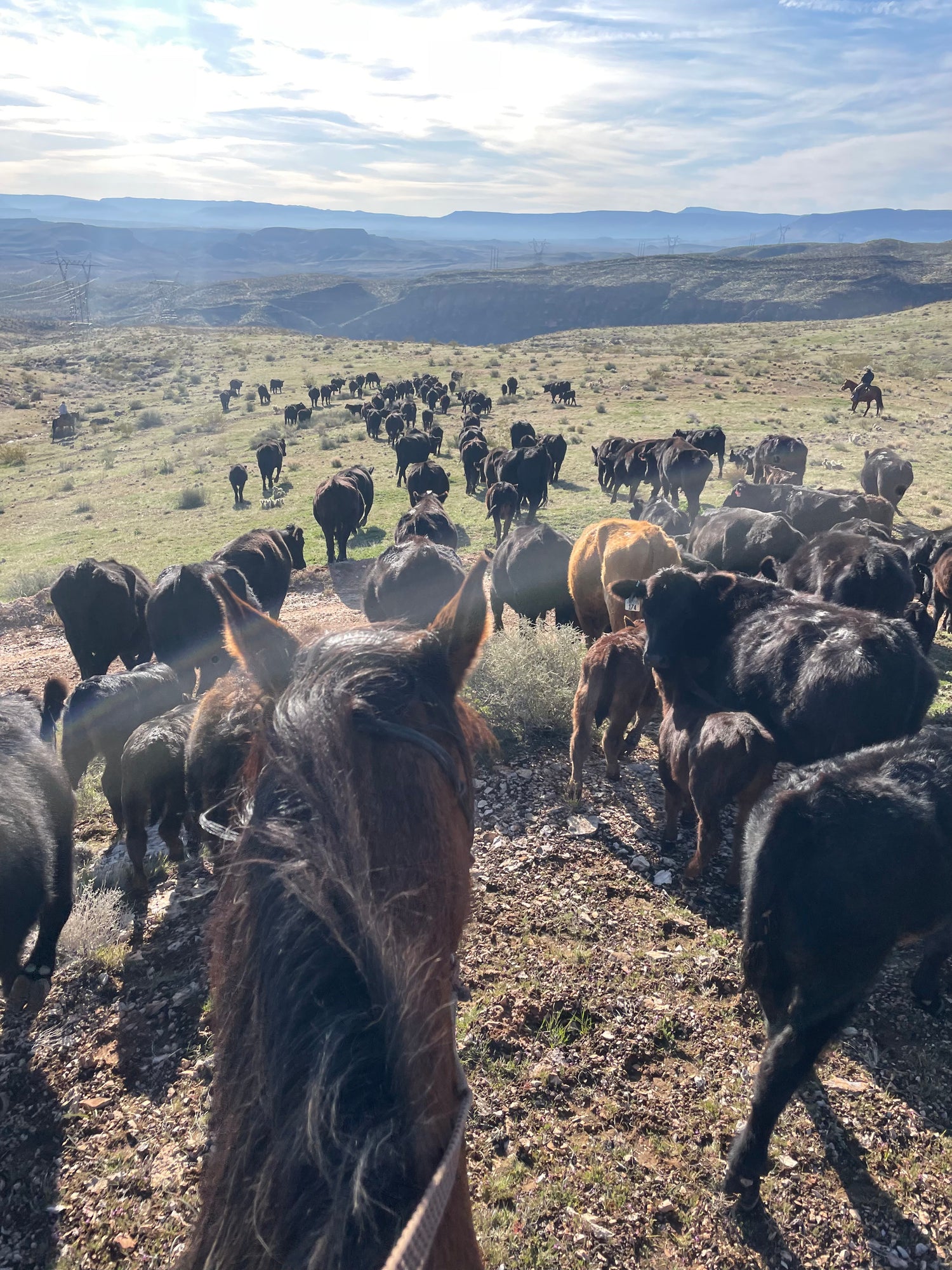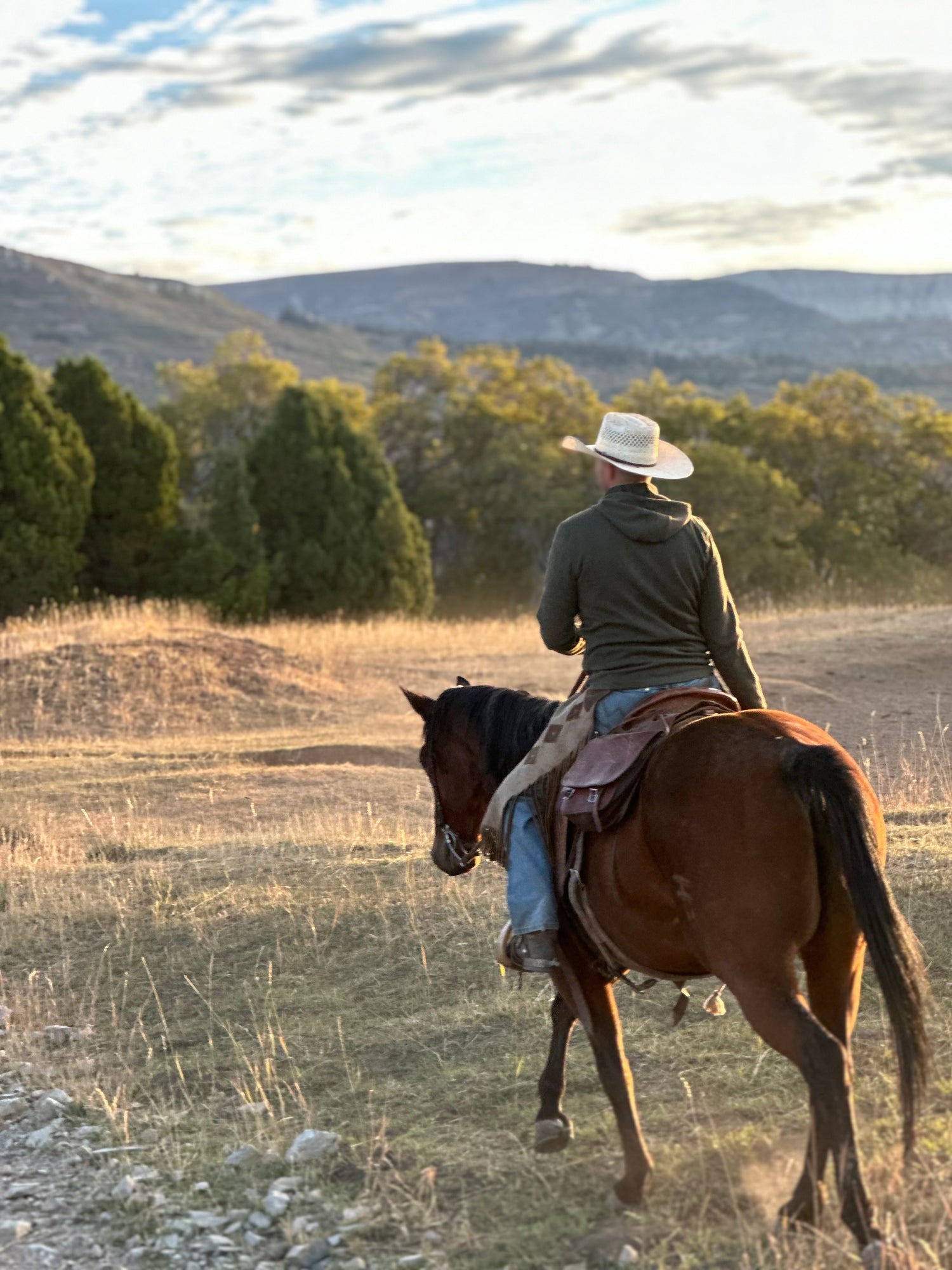
Our Practices
At Larson Angus Beef, land stewardship is our top priority. By maintaining healthy rangelands, we ensure our cattle have access to the best grazing conditions while also regenerating both our private deeded acres and public lands. For nearly a century, we have carefully managed these lands, committed to passing them on to future generations in even better condition.
To sustain the legacy of Larson Angus Beef, we practice rotational grazing, ensuring our cattle never overgraze a pasture. By rotating pastures strategically, we allow plants and grasses the necessary time to recover before being grazed again. We employ a method known as deferred grazing, ensuring no pasture is grazed at the same time of year consecutively. For example, if a pasture is grazed in the spring one year, it will be deferred until winter or a later season the following year.

Given our arid climate, most pastures require 18 months to over two years between grazing periods. Drought conditions frequently affect our operations, and we adjust our grazing strategies accordingly by reducing herd size, increasing recovery periods, and limiting the time cattle spend in each pasture. Maintaining ground cover is essential, as it helps retain moisture by preventing rain from compacting the soil and washing away. Instead, the forage-covered ground absorbs rainfall effectively, enhancing soil health and hydration.
Collaborating for Sustainable Rangeland Management
We work closely with the Bureau of Land Management (BLM), Natural Resources Conservation Service (NRCS), Utah Department of Agriculture and Food Grazing Improvement Program (UDAF-GIP), and the Division of Wildlife Resources (DWR) on various projects to improve rangeland sustainability. By subdividing large pastures into smaller sections with fencing, we achieve multiple benefits:
- Increased Recovery Time: Longer intervals between grazing events allow forage to regrow and fully recover.
- Improved Pasture Utilization: Cattle consume a balanced portion of available forage before moving to a new section.
- Prevention of Overgrazing and Undergrazing: Properly managed grazing prevents excessive plant stress while ensuring all vegetation is utilized.
- Enhanced Herd Impact: Concentrated grazing naturally fertilizes the soil with hoof action, manure, and urine, encouraging healthier regrowth.
These smaller pastures give us better control over our cattle, allowing us to manage our rangelands more effectively.
Water Conservation and Wildlife Support
In partnership with government agencies, we have constructed large rainwater catchments, miles of water pipelines, and dozens of strategically placed troughs across our ranch. These water sources support not only our cattle but also local wildlife such as desert bighorn sheep, mule deer, quail, and chukar. Since implementing these improvements, we have observed a significant increase in wildlife activity. These water points also aid in herd management, similar to fencing, by influencing grazing patterns and pasture recovery times.
Cattle as Tools for Land Management
Our cattle play a crucial role in our rangeland management strategy, ensuring they graze on high-quality pastures year-round. Unlike many operations, our herd primarily feeds on open pastures rather than hay. Once a cow is bred, it may never consume a flake of hay in its lifetime. To maintain their health, our cattle have free-choice access to essential minerals and salt, receive routine vaccinations, and are only treated with antibiotics when medically necessary.
Calf Rearing and Finishing Process
Our calves remain with their mothers for the first six months, receiving standard vaccinations at two months and booster shots before and after weaning. We use fence-line weaning to reduce stress and minimize sickness. After weaning, the calves are fed hay, brewery grain, and minerals for 30–60 days while being closely monitored for health concerns. Antibiotics are administered only when necessary.
Following this backgrounding period, the calves return to the range until they reach approximately 1,000 pounds. At that stage, they undergo a finishing period of at least 90 days, where they are fed a high-quality diet of hay, brewery grain, and corn. Our brewery grain is sourced locally from Silver Reef Brewery, giving our beef a distinct, sought-after flavor and texture that sets us apart from other producers.
At Larson Angus Beef, stewardship isn’t just a practice - it’s a promise. A promise to the land that has sustained us for generations, to the cattle that thrive under our care, and the future ranchers who will carry this legacy forward. With every pasture restored, every drop of water conserved, and every calf raised with integrity, we are not just ranching - we are building something lasting. Because true success isn’t measured in what we take from the land, but in what we leave behind.



